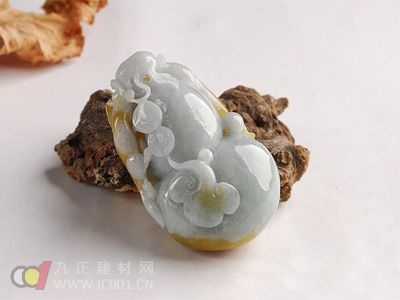First of all, you should carefully read and read more about the monologue of ancient jade. These academic works are rich in knowledge. For example, "The Ancient Jade Picture Examination" by Wu Dazheng in the late Qing Dynasty, "The Complete Works of Chinese Art: Jade Objects" edited by contemporary Yang Boda, Zhang Guangwen's "Jade History", Hong Kong Li Yinghao's "Identification of Ancient Jade".
Second, direct contact is very important. The ancient jade jade is old, heavy, with a soft and smooth appearance, natural color, sharp knife, and nourishment. New jade does not have these feelings. In the Song Dynasty, there were antique jade. At that time, some people used the rainbow grass to forge chicken blood. After the Qing Dynasty, there were more and more fakes. There were also unprecedented creations, such as "dog jade", "yang jade" and "wind jade", which attracted people.
The quality of jade is generally judged from five aspects: texture, hardness, transparency, specific gravity and color. The texture of jade refers to the fineness and warmth of jade. One of the differences with stone is that jade is delicate, warm and firm, translucent, and lustrous like fat; while stone is rough and dry, lacks luster, and is opaque. Hardness refers to the ability of jade to resist external forces. The higher the hardness, the more difficult the processing and the better the quality of the jade. Although the jade hardness index can be detected by the instrument to detect its internal crystal structure, the scoring hardness method is generally used in operation. The hardness of common jade in China is between 4 and 6 degrees, which is higher than the hardness of copper and lower than the hardness of glass. That is to say, jade can be traced on the copper, and can also be traced by the glass.

People often distinguish gemstones, jade, and colored stones by the hardness of gemstones. In general, gemstones have a Mohs hardness of 7 or more, such as diamonds, rubies, sapphires, and jadeites, but Opel stones are exceptional, with a Mohs hardness of 5.5; high hardness jade has a Mohs hardness of 6-7.5. Such as Hetian jade, Nanyang jade, jade; low hardness jade hardness between 4-6, such as turquoise, jade. Minerals below 4 are generally no longer called jade, but are called colored stones.
In addition to scoring hardness, there is also a hardness standard called compressive hardness, or pressed hardness, that is, absolute hardness, which refers to the ability to resist external impact, also called toughness in the jade industry. The highest compressive hardness in nature is black diamond, marked 10 degrees, followed by Hetian jade, compressive hardness is 9 degrees, jade, red treasure, sapphire is 8 degrees, diamond, crystal, aquamarine is 7-7.5, etc. Wait. In another way, Hetian jade has a compressive hardness of 1000, jadeite is 500, jadeite is 250, and agate is only 5. Hetian jade has such high toughness that its crystal distribution is woven like a blanket, and the interaction between molecules is enormous.
Complex Fertilizer,Humizone Npk Complex Fertilizer ,Compond Fertilizer
Lower Blood Pressure Co., Ltd. , http://www.bjorganicfertilizer.com